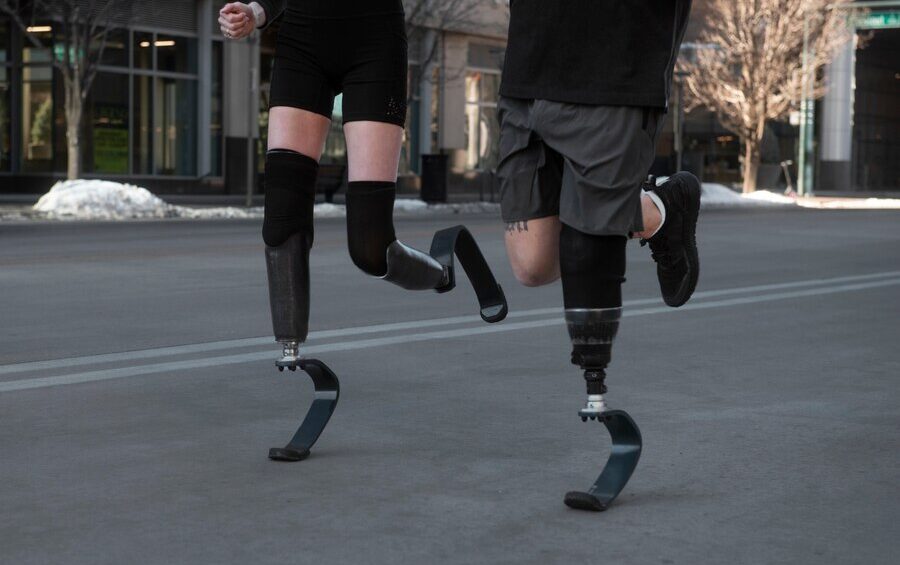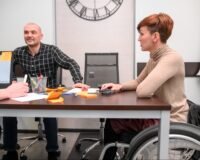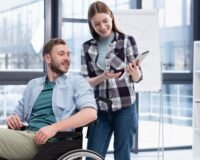Introduction
Amputations and limb differences refer to the absence or loss of a limb, whether due to congenital conditions, accidents, or medical reasons. Individuals with limb differences may require adaptive support, assistive devices, and therapy to improve mobility and independence. Understanding amputations and limb differences, their challenges, and the available support services can help individuals lead fulfilling and active lives.
At Careable, we specialize in providing NDIS-funded services for individuals with limb differences and amputations, including prosthetic support, therapy coordination, assistive technology, daily living assistance, and community participation . Our goal is to help participants maximize their mobility, regain independence, and engage in meaningful activities .
Causes of Amputations and Limb Differences
- Congenital Limb Differences – A condition present at birth due to genetic factors or developmental issues.
- Trauma – Accidents, workplace injuries, or combat-related amputations.
- Medical Conditions – Circulatory disorders (such as diabetes or peripheral artery disease) leading to limb loss.
- Cancer – Bone cancer or soft tissue sarcomas may require surgical amputation.
- Infections – Severe infections that result in tissue death (gangrene) may lead to amputation.
Types of Limb Differences and Amputations
Limb differences and amputations can vary in type and severity:
Partial Hand or Finger Amputation
Loss of part of a hand or fingers, affecting dexterity and grip.
Below-the-Knee (Transtibial) Amputation
Amputation of the leg below the knee, requiring prosthetic limb support.
Above-the-Knee (Transfemoral) Amputation
Loss of the leg above the knee, often requiring advanced prosthetics.
Arm or Shoulder Amputation
Loss of an arm or part of the upper limb, impacting daily function.
Bilateral Amputation
Loss of limbs on both sides, requiring extensive rehabilitation and assistive technology.
Challenges and Effects of Limb Differences
Individuals with limb differences or amputations may face the following challenges:
- Phantom limb pain or sensation.
- Difficulty with mobility and daily activities.
- Emotional and psychological adjustment challenges.
- Increased energy expenditure when using prosthetics.
- Risk of muscle imbalances and joint strain.
- Need for adaptive devices and home modifications.
How Careable Supports Individuals with Limb Differences
Careable provides comprehensive NDIS-funded services to assist individuals with amputations and limb differences in achieving mobility, confidence, and independence. Our services focus on therapy, prosthetic support, assistive technology, and community participation.
✅ Assistance with Daily Living (ADL)
✅ Supported Independent Living (SIL)
✅ Assistive Technology Support
Conclusion
Limb differences and amputations present challenges, but with the right support, therapy, and prosthetic technology, individuals can achieve independence and lead fulfilling lives. Careable is committed to offering NDIS-funded services that empower individuals with amputations to enhance mobility, regain confidence, and thrive.
📞 Contact Us
If you or a loved one needs NDIS-funded support for Amputations and Limb Differences , reach out to our team today.
📞 Call us: 1300 DECIDE
📩 Email us: cx@careable.com.au
🌐 Visit us: [www.careable.com.au]
FAQs
Can individuals with limb differences live independently?
Yes, with the right support, including SIL, therapy, and assistive technology, many individuals with limb differences can live independently.
What therapy is available for amputations?
Physical therapy, prosthetic training, and occupational therapy help improve mobility and daily function.
How does NDIS help individuals with limb differences?
NDIS provides funding for prosthetics, therapy, assistive technology, and community participation.
What assistive devices are available for limb differences?
Prosthetic limbs, adaptive tools, and mobility aids help individuals regain functionality and independence.
How do I apply for NDIS support for amputations?
You can apply through the NDIS website or contact Careable for assistance in navigating the process.






